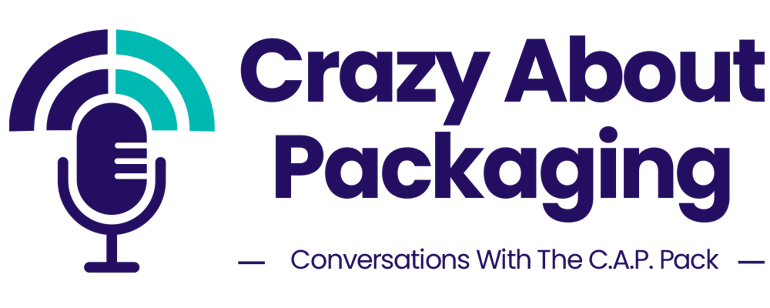
Welcome back to this month’s episode of Crazy About Packaging. Today, we're diving deep into the fascinating world of retort processing. We’ll answer the question, “what is retort packaging” and will explore its uses along with what the future holds for this vital process.
Sneak Peek for Episode #17
Check out the latest podcast to hear us discuss what retort packaging is. You can listen on Spotify or Apple, or watch on our website. Want a sneak peek? Read on to see some of the topics we cover.
Award-Winning Innovation
The episode kicks off with an exciting announcement from Natalie, Mike, and Jonathan. We are thrilled to announce that ICPG’s XPP polypropylene solutions for polystyrene replacement in thermoforming and form fill seal have been selected as the winner of the recyclability category in the 2024 U.S. Plastics Pact Sustainable Packaging Innovation Award!
"We're honored to have been chosen as this year's winner for recyclability," says Jonathan. "This is the result of many years of super hard work from our team, and we're really excited to share our solutions and keep helping people achieve their sustainable packaging goals."
Together with our dedicated team and valued partners, we are thrilled to be at the forefront of shaping a more sustainable future.
Can I Recycle That?
In the latest round of our favorite game, Natalie introduces a fruit cup from her pantry (with an expiration date from 2020!) to play "Can I Recycle That?" The cup, made of multi-layer high barrier co-extruded polypropylene with an EVOH barrier, sparks an interesting discussion on recyclability.
What do you think of Natalie’s fruit cup? Does the EVOH barrier affect whether she should toss it in the recycling bin or the trash can? Listen to the podcast to find out!
What is Retort?
We’re talking about retort processing this month — so what is retort exactly?
Retort is a unique and complex process involving high temperatures and pressure to sterilize food within its container. This method, originally developed for metal cans, has evolved to include robust plastic containers, particularly those made of high-barrier polypropylene.
It’s an especially important process for packaging products like stews or soups which have particulates (and even meat) in them. It cooks the product directly in the container and allows it to stay shelf-stable much longer.
Wondering what a process like this looks like? The team jokes that it’s almost like a submarine due to its large, high-pressure environment. The process has undergone some changes over the years — while it was originally used in canning, plastics have evolved so much that many retort applications are now packaged in polypropylene instead. PP packaging for these applications is designed to be more user-friendly, effective, and lighter weight.
Advantages of Retort Packaging
Retort packaging offers significant benefits, including extended shelf life, the ability to cook food within the container, and the use of robust materials that withstand high temperatures and pressures. This makes it ideal for products like soups, stews, and pet food. Depending on the barrier in your packaging, retort processing can keep foods shelf-stable for 14–16 months!
Challenges and Sustainability
Despite its advantages, retort packaging does come with challenges. One major issue is "retort shock," where the high moisture and temperature can temporarily reduce the effectiveness of barrier materials like EVOH. However, advances in co-extrusion processes help mitigate this issue by strategically placing the EVOH layer within the packaging structure.
On the sustainability front, retort packaging made from polypropylene is fully recyclable. Mike highlights the shift from metal cans to plastic containers and the ongoing efforts to enhance the recyclability of flexible packaging. He states, "Polypropylene has been around for many years and is fully recyclable. The beauty of it, especially if it's combined with EVOH, is that it goes straight into the recycle stream."
Retort is a fascinating process that is extremely advantageous to processors looking to get shelf-stability for specific applications. It’s a perfect candidate for PP materials, which makes it sustainable long-term. The process has seen few changes over the years, and we think it will continue to be a staple in the packaging industry for years to come.
Let’s Talk Retort Packaging
Interested in retort packaging? Want to weigh in? Tell us your thoughts — follow us on LinkedIn, Facebook, and Instagram to join the conversation! And be sure to listen and subscribe on Spotify and Apple, or our website. Join us next month as we continue our process highlight series with an episode all about form fill seal.



